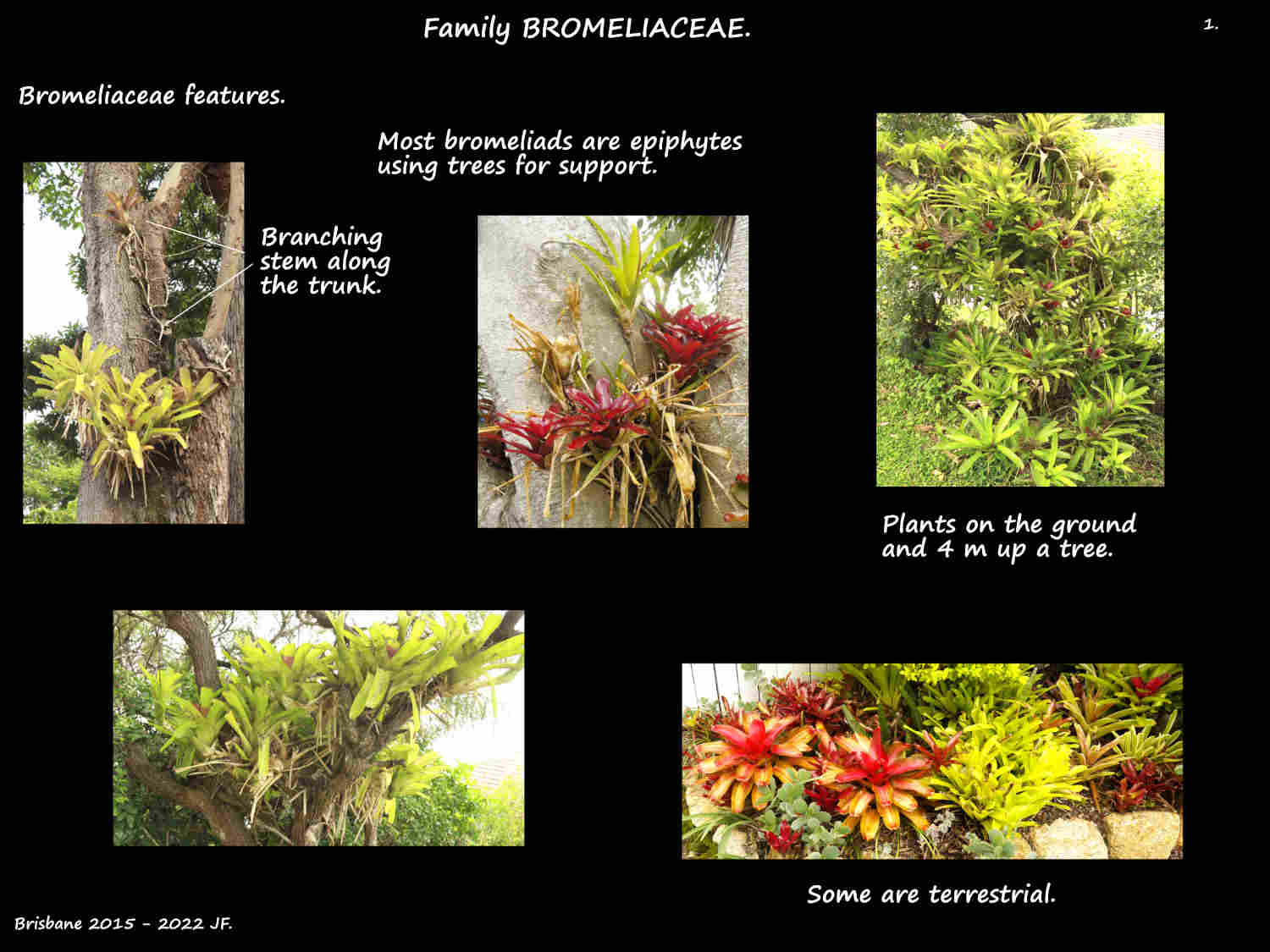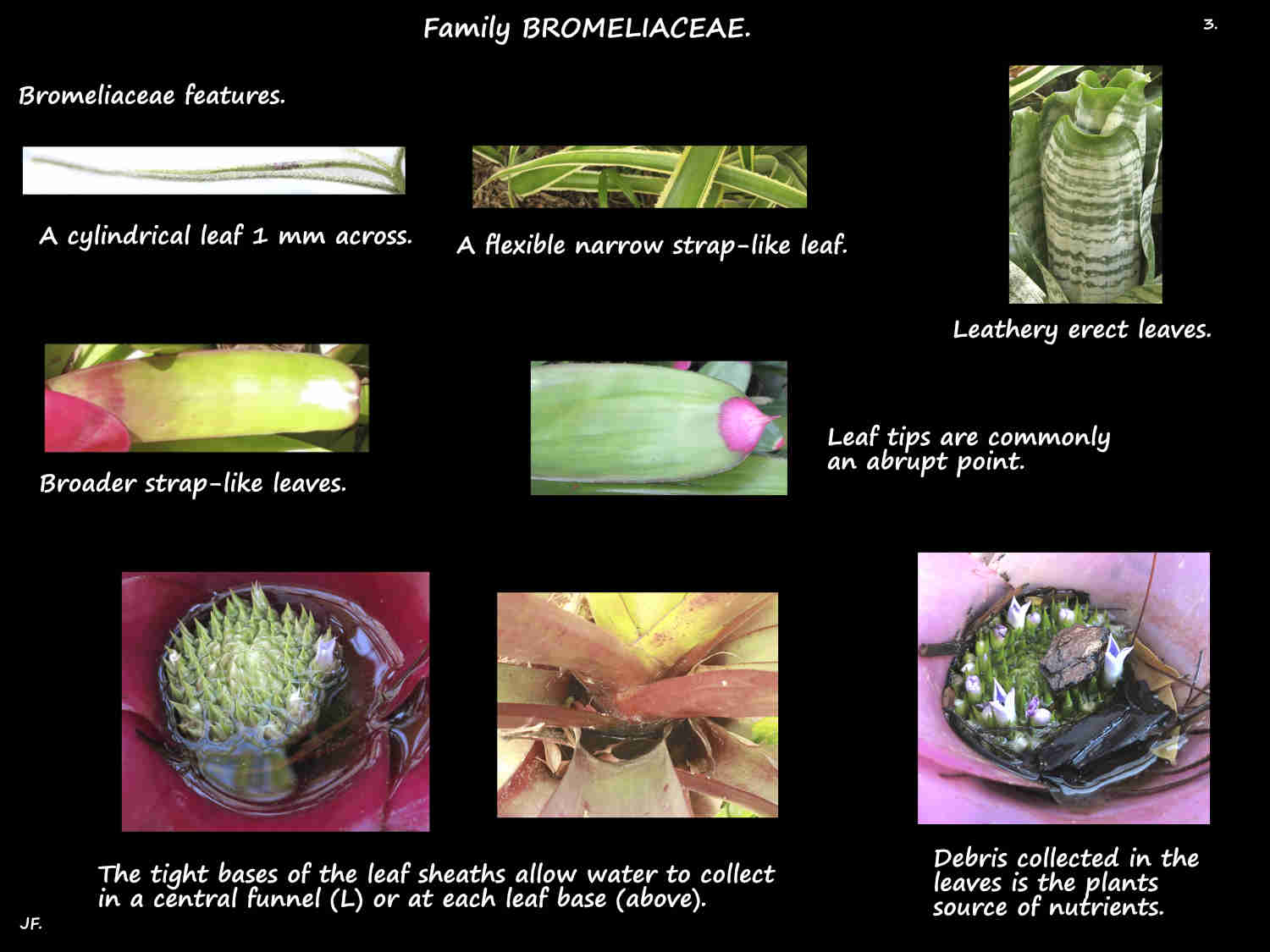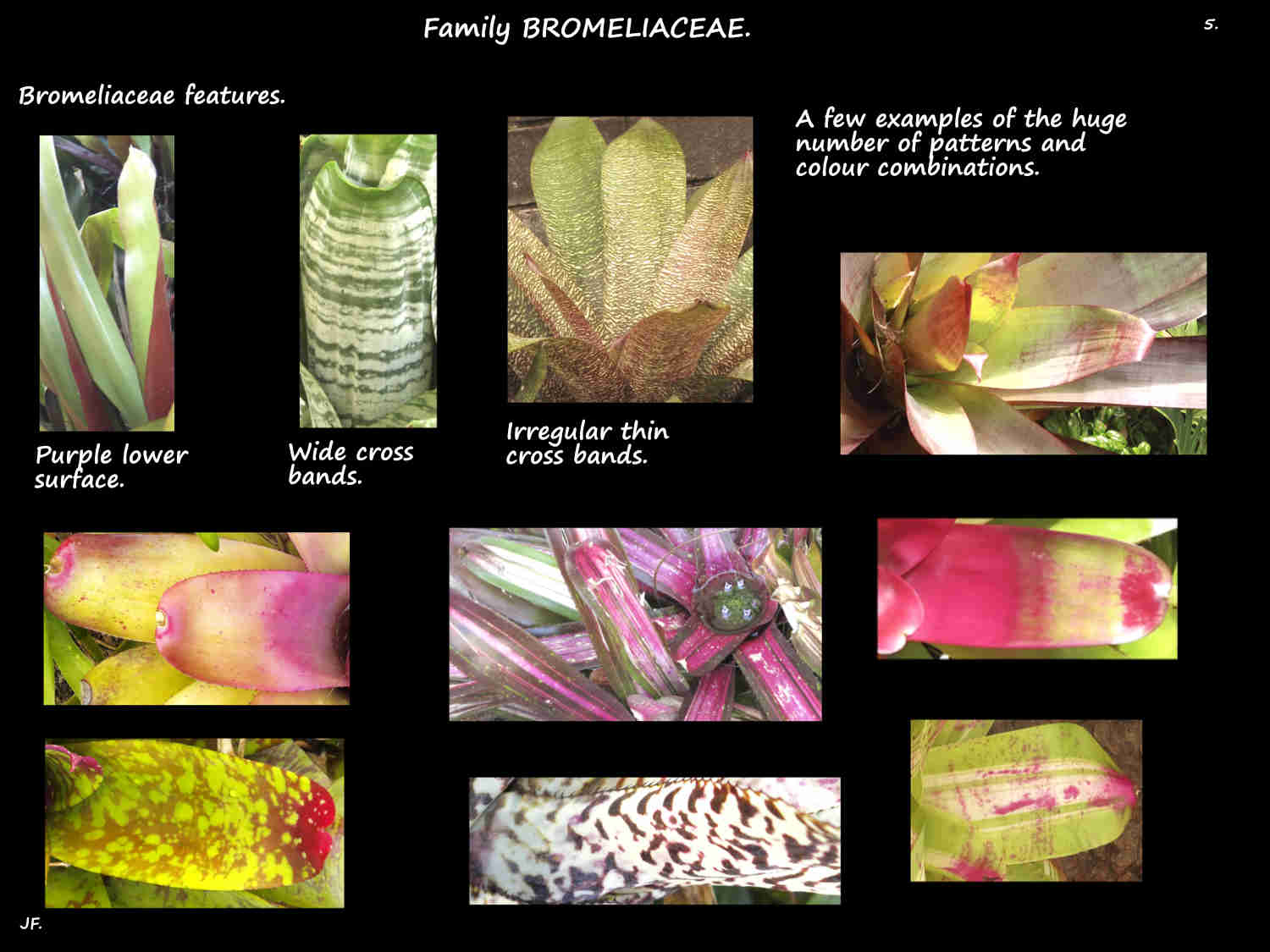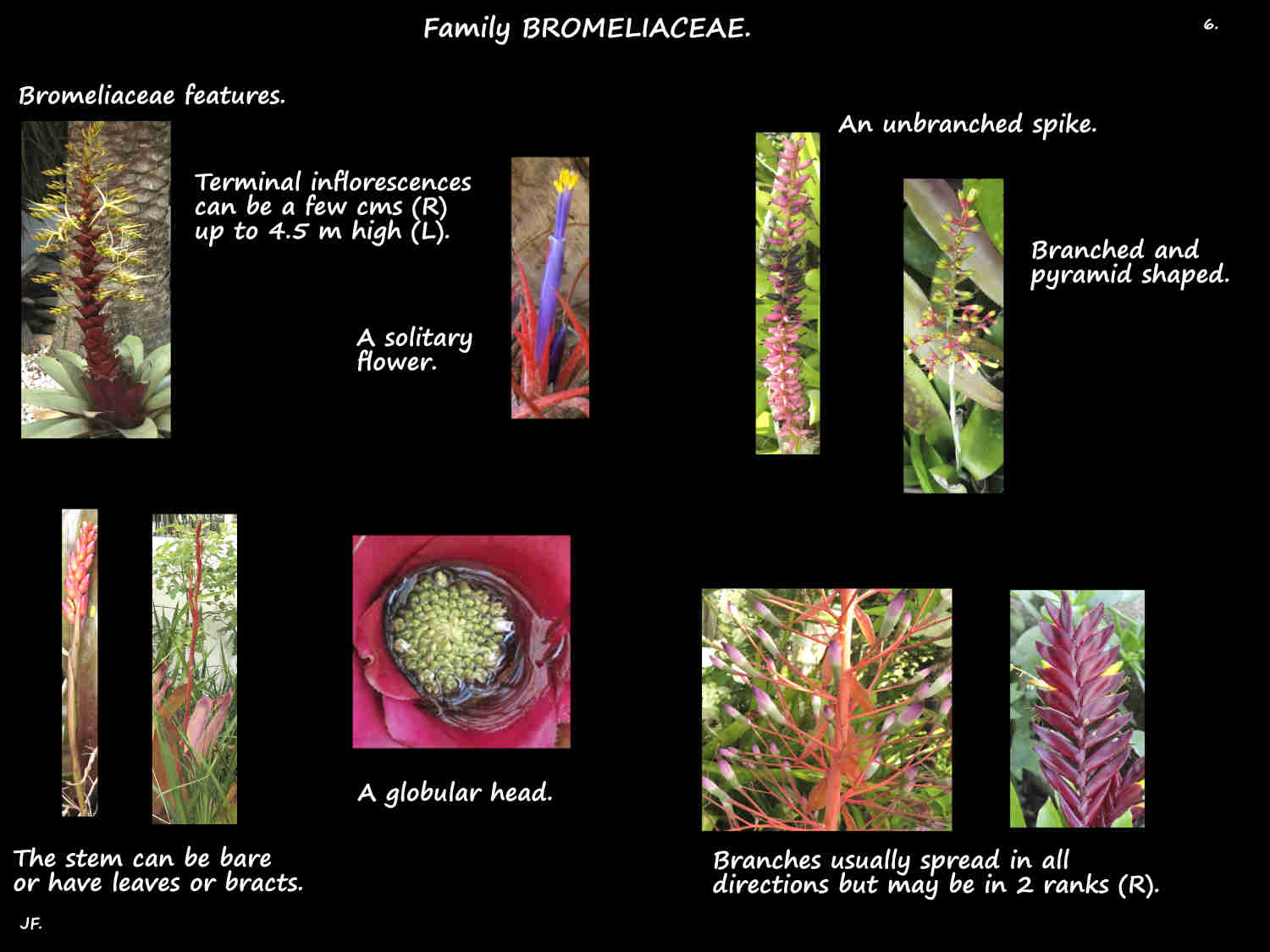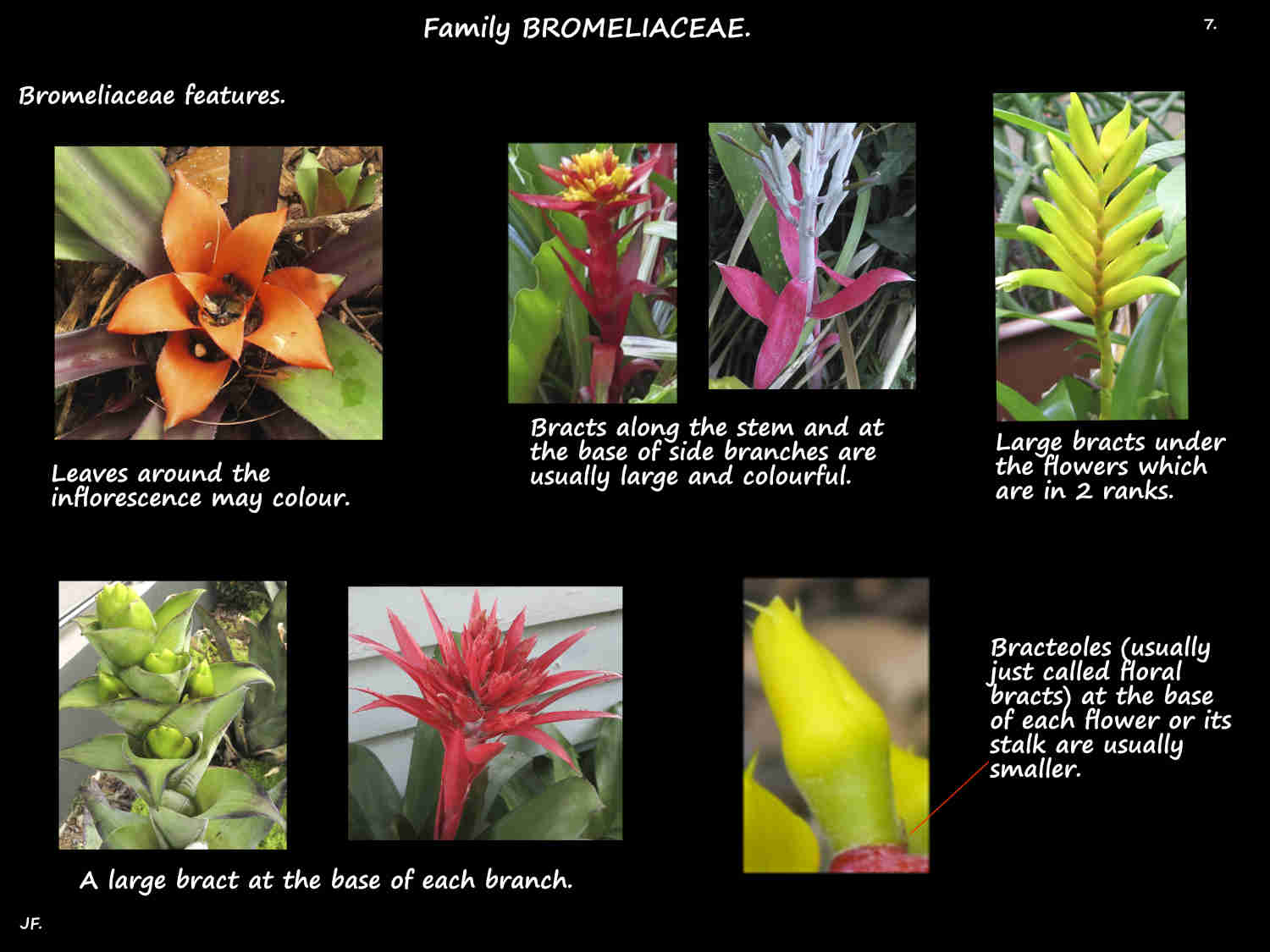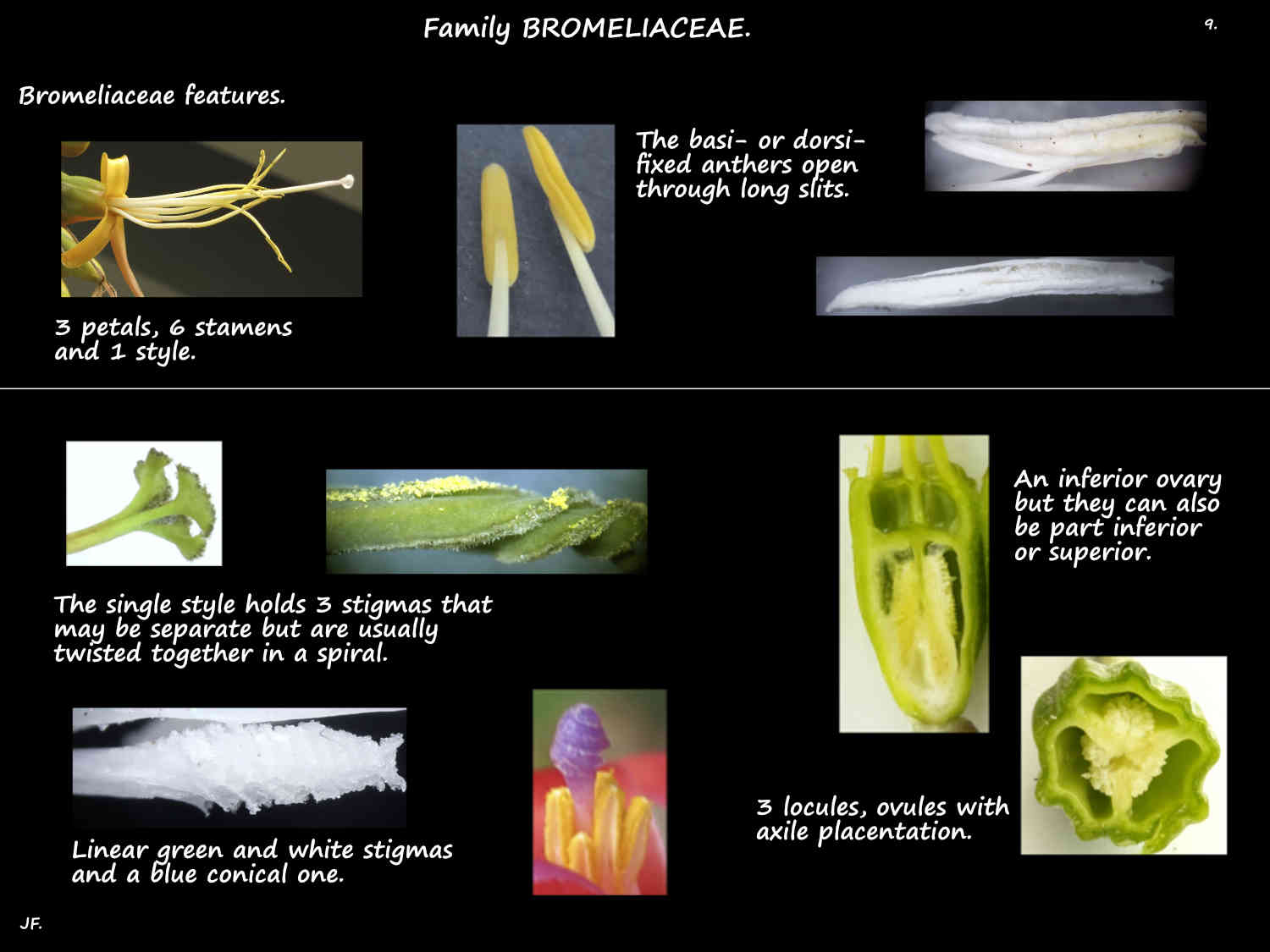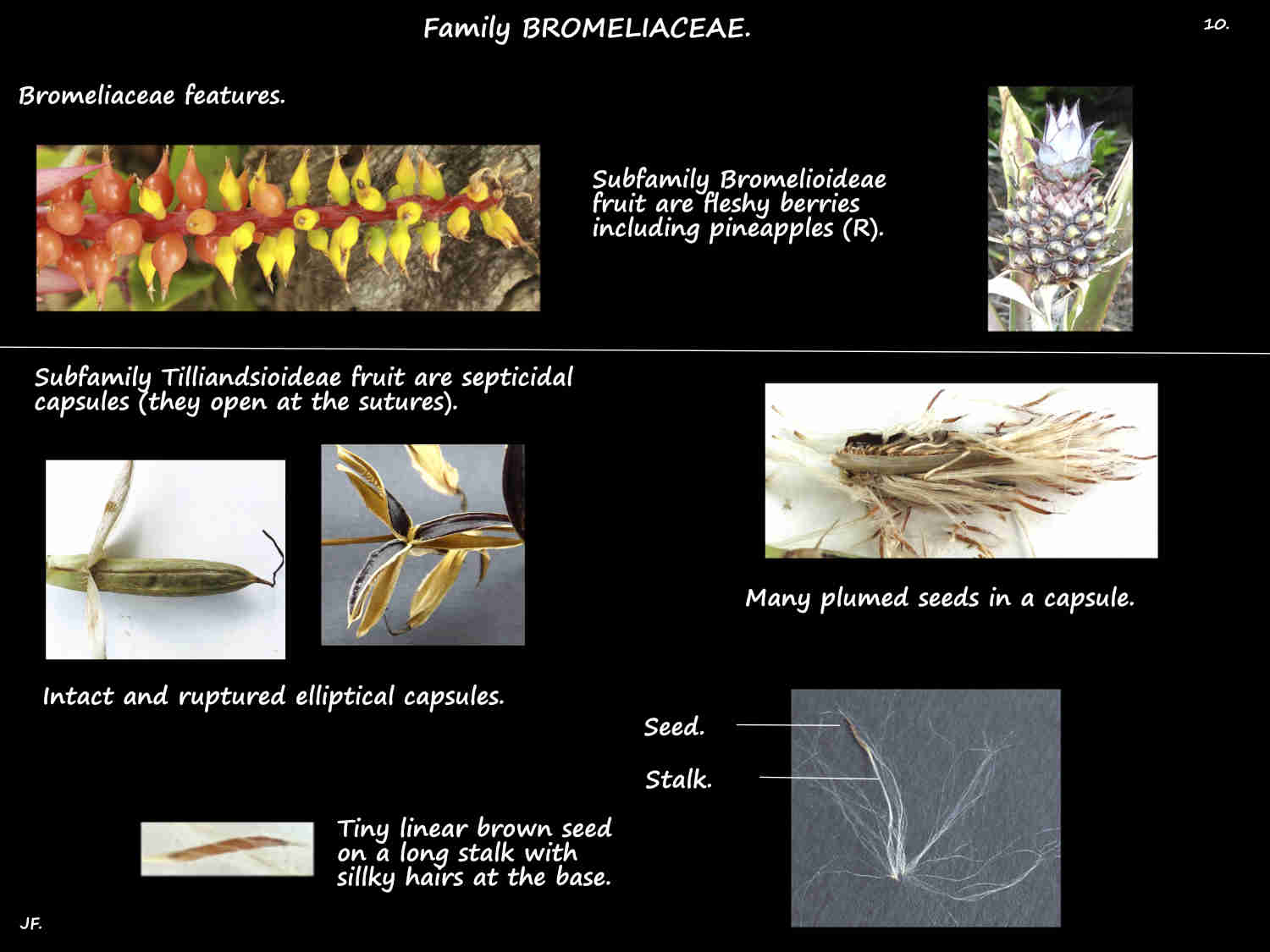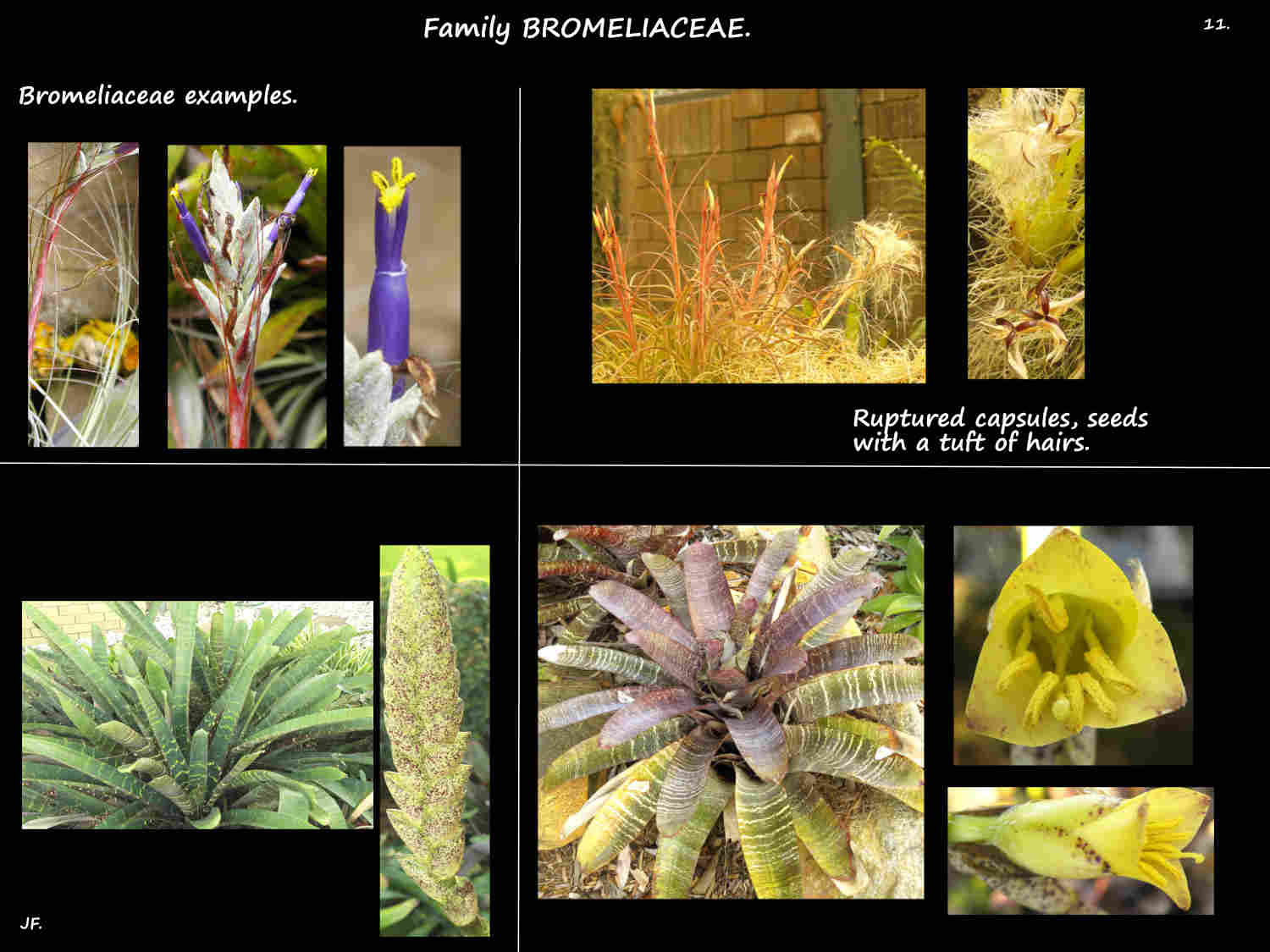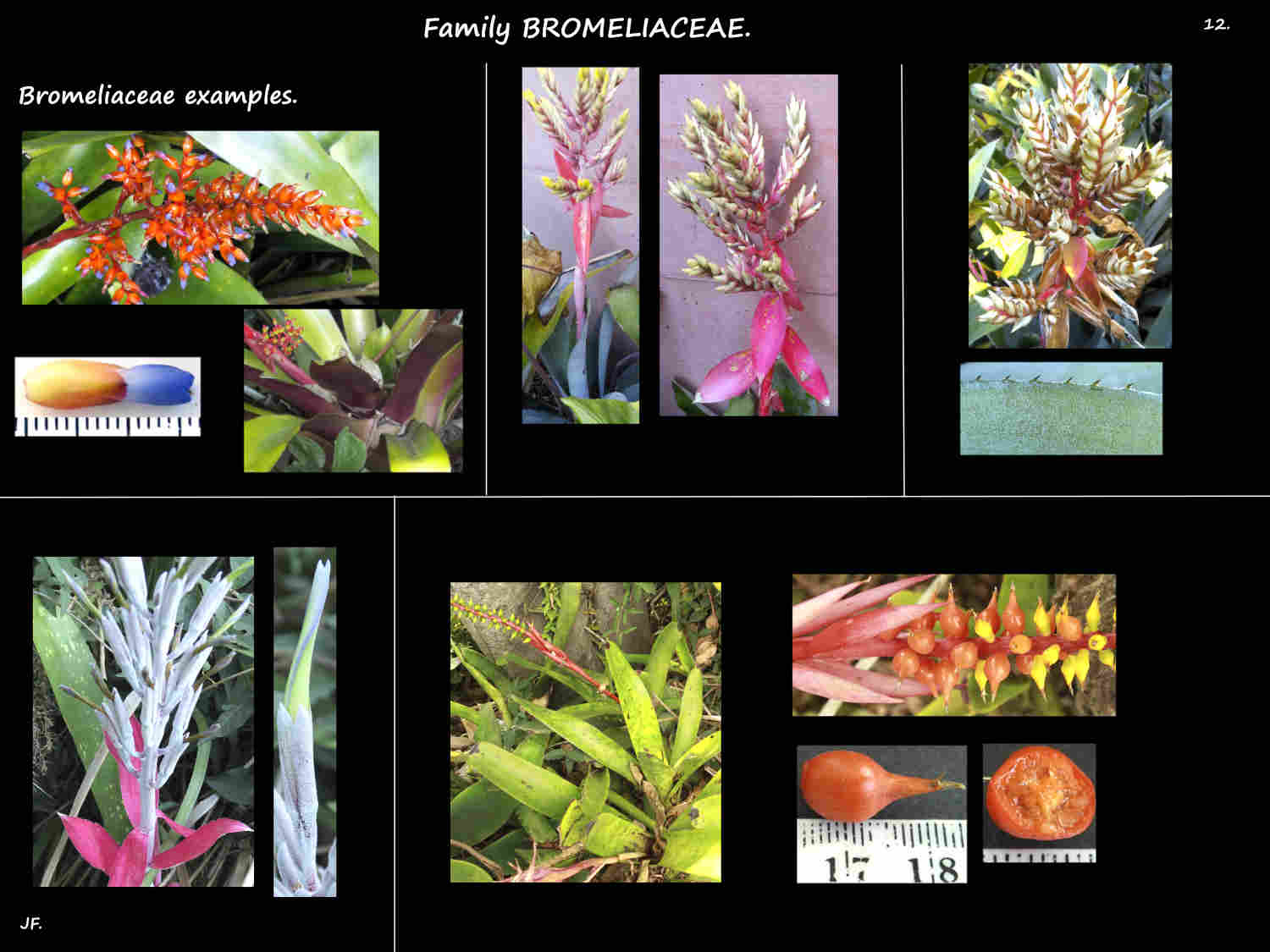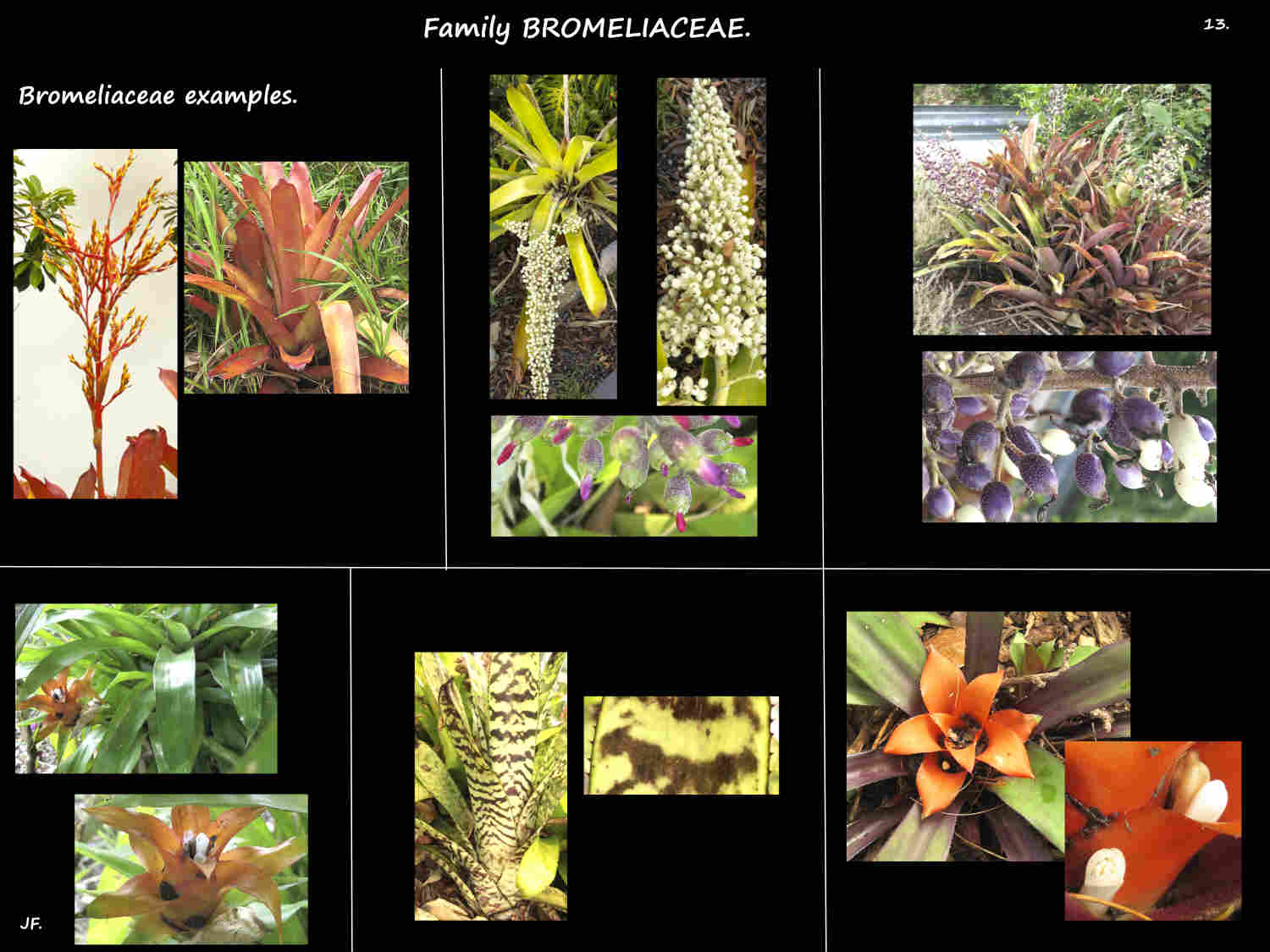Bromeliaceae.
Depending on how they are classified and which genera are included there are 72 to 98 genera with 3,000 to 3,7000 species
in 3 or 8 subfamilies.
Better known genera include Aechmea, Alcantarea, Ananas, Billbergia, Guzmania, Neoregelia, Portea, Tillandsia and Vriesea
mainly due to their widespread use as garden and pot plants.
Most of the family are native to tropical and subtropical America.
Most are perennial herbs growing as epiphytes on other plants or on rocks.
Some grow as a shrub and a few grow on the ground.
Roots can be used for support or just for absorbing water and nutrients sometimes from the air.
Their vegetative size ranges from cms to 4 metres high and their stems are often branched.
The simple leaves are mostly alternately arranged in a spiral but are sometimes in 2 ranks.
They frequently form a basal rosette but can also be spread out on a long stem.
Leaves have no petiole and their wide bases form an open sheath around the stem.
In many the tight basal rosettes collect and store water and debris.
The linear, ovate or lanceolate leaves can have a smooth edge or sharp teeth or spines.
There are no cross veins between the parallel veins.
Many have trichomes (hairs or scales) that absorb water or, when dense protect from the sun.
Inflorescences are almost always terminal.
They can be a single flower, a number along a branched or unbranched stem or many in a head.
Most plants have bisexual flowers but some have separate male and female flowers and others have male and female flowers
on different plants.
The inflorescence stalk usually has bracts that are often large, coloured and long lasting.
There are smaller floral bracts under the flowers.
Flowers have 3 mostly green sepals that are free or joined at the base.
The three petals can be free or fused into a long or short corolla tube with erect to flaring lobes.
Petals may have a flap-like appendage (corona) or two basal nectary scales.
Besides green and white they can be red, purple, blue, orange or yellow.
The 6 stamens, in 2 whorls have dorsi- or basi-fixed anthers that open inwards through longitudinal slits.
When the petal bases are fused the filaments are often fused to them otherwise all are free of each other.
Stamens in the 2 whorls may of equal length or different.
The superior or inferior ovary, of 3 fused carpels has 3 locules.
The few to many ovules have axile placentation.
The single apical style commonly has 3 stigmas that are often twisted.
There are septal nectaries around the ovary.
In most genera the fruit are berries but some are septicidal capsules.
Seeds may be smooth, winged or have plumes of hairs.
The family can be divided into 8 subfamilies with most genera, and the better known species being in:
Bromelioideae with 40 genera and nearly 1000 species including Aechema, Ananas, Bilbergia and Neoregelia.
These almost all have teeth or spines on the leaves plus an inferior ovary and fleshy fruit.
Tillandsioideae has around 29 genera and 1500 species including Guzmania, Tillandsia and Vriesea.
Guzmania has flowers in many ranks and petal bases that are fused into a tube longer than the sepals.
Tillandsia and Vriesea have flowers in 2 ranks and the petals are free or form a short basal tube.
Vriesea petal bases have scales while those of Tillandsia do not. There are exceptions.
They all have a superior ovary and dry capsules.
J.F.
